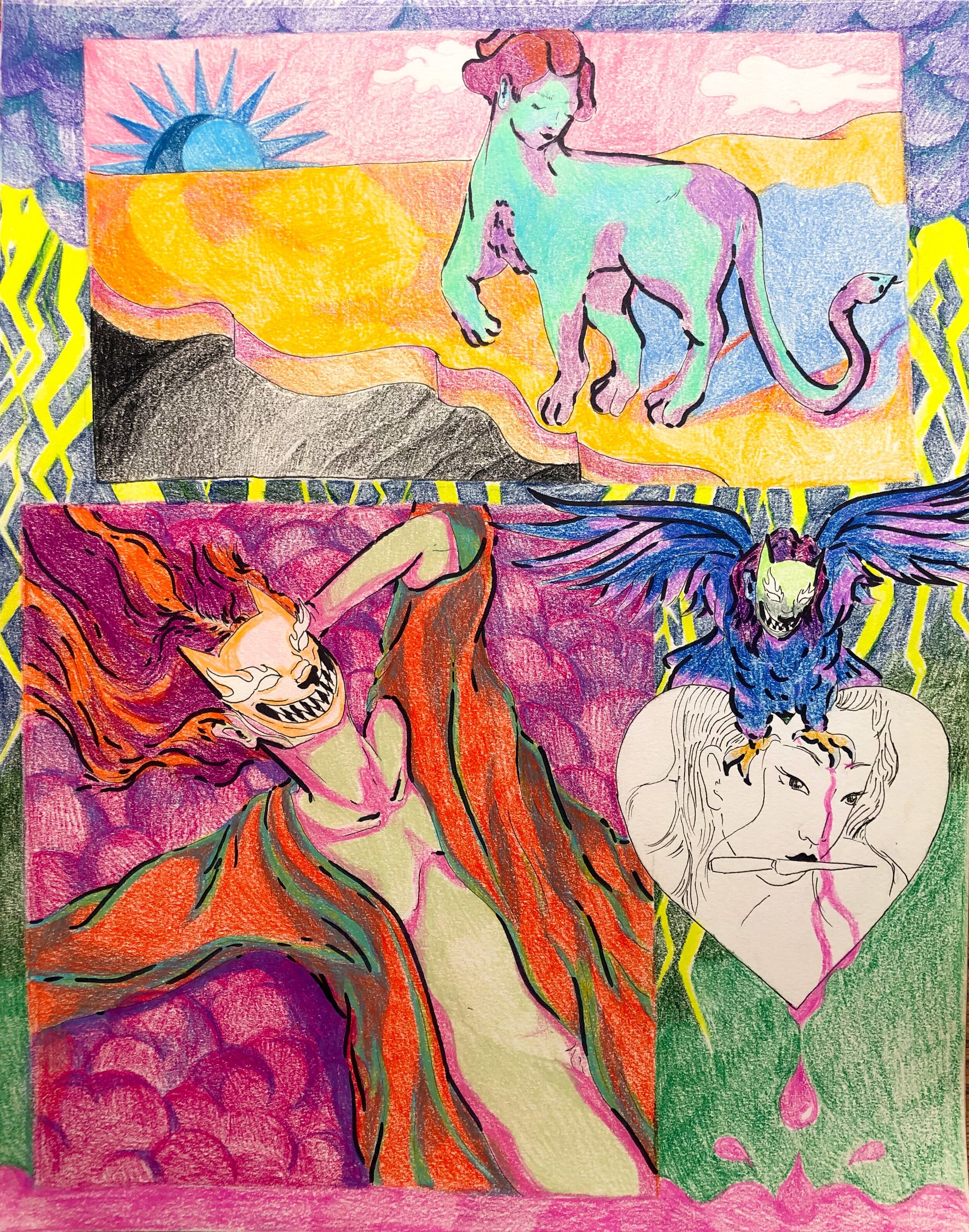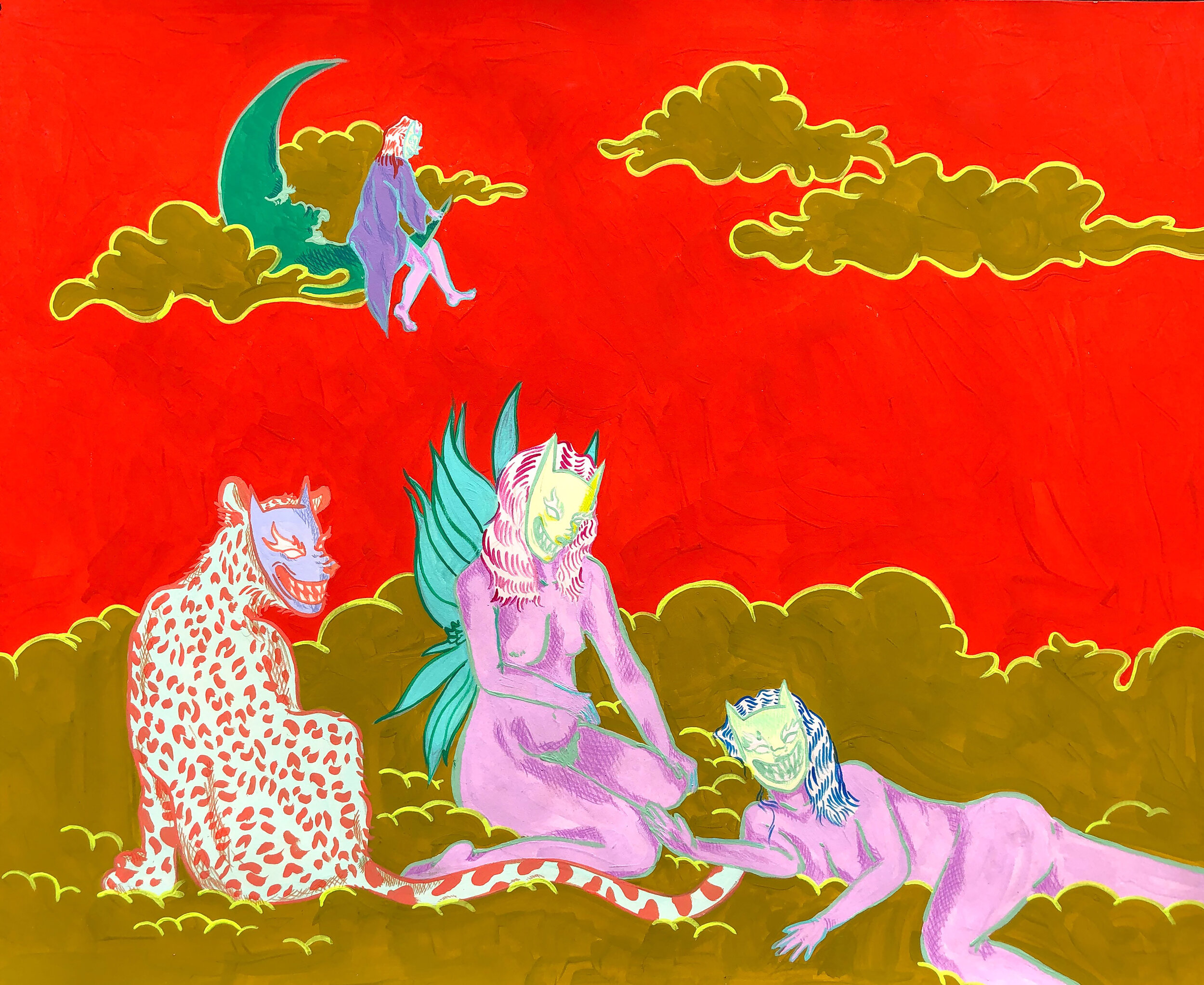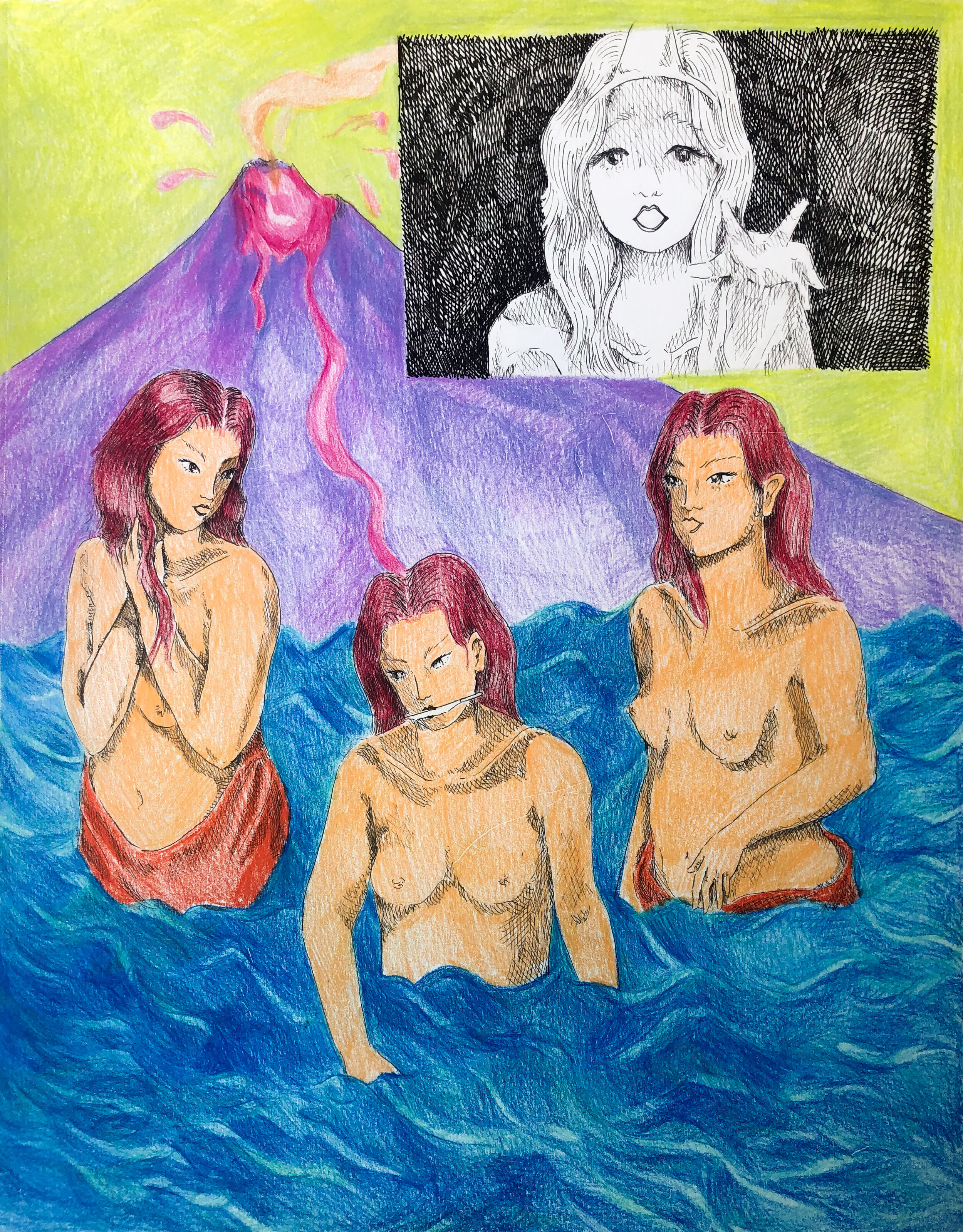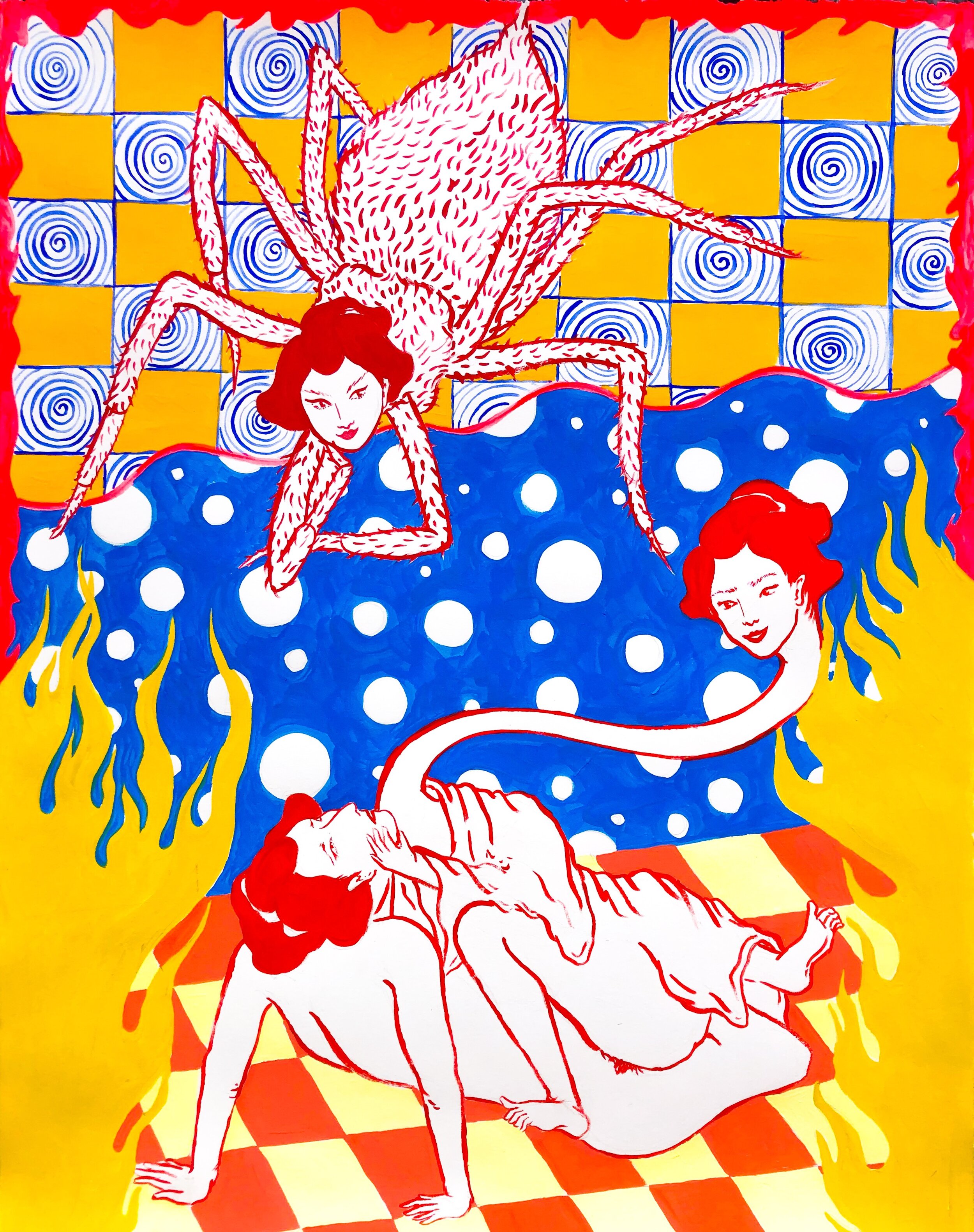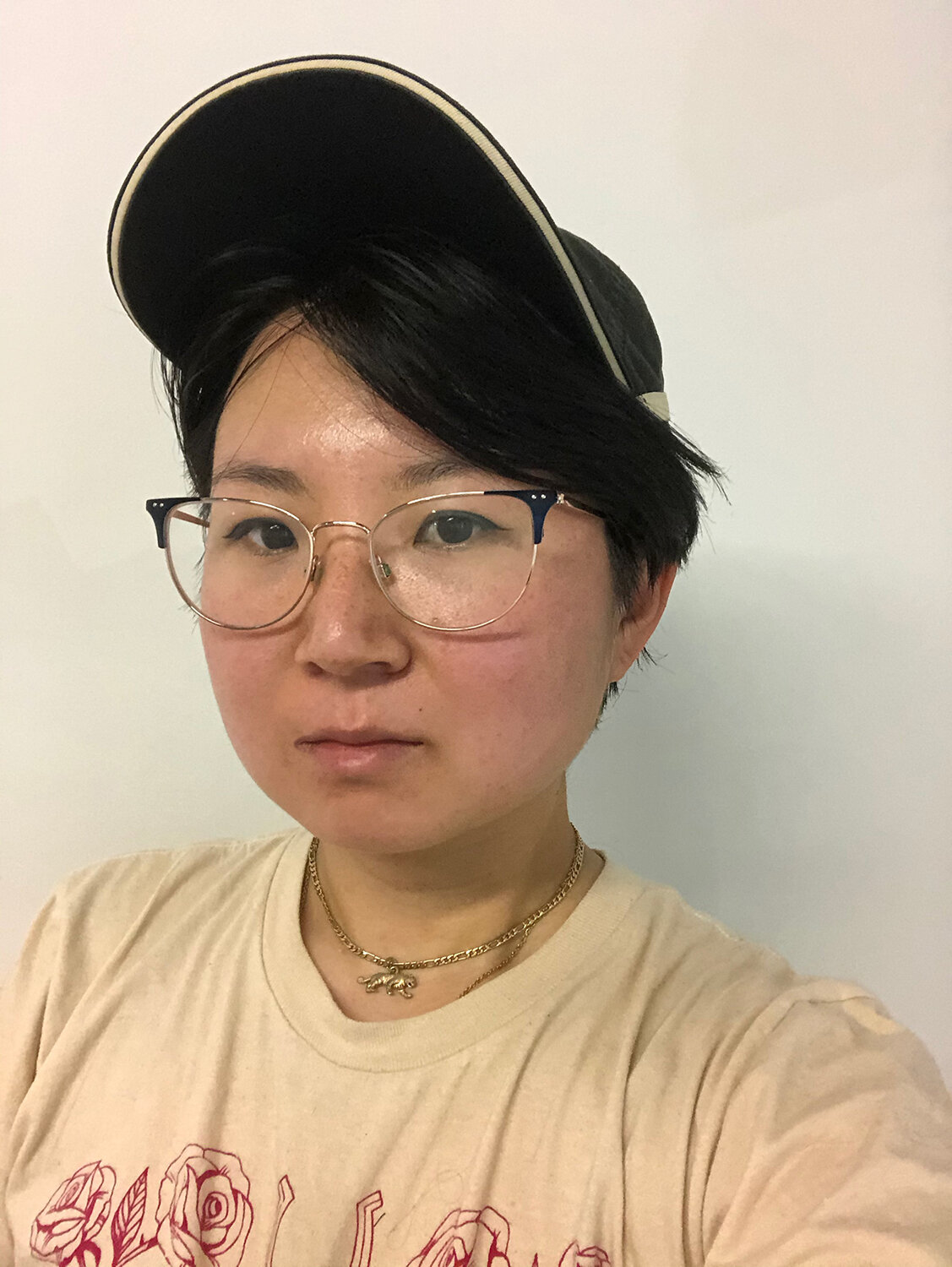Eriko Hattori: June 2021
Eriko Hattori (they/them) is a Pittsburgh-based artist. Hattori uses imagery, symbolism, and folklore to investigate the tension between their queer identity and Japanese heritage. Hattori's work has been shown in duo and group exhibitions across the country and has been featured in Art Maze Magazine, the GIFC World Tour, and online for Field Project Gallery's Corona Care project. They're currently a resident artist at the Brew House Distillery program in Pittsburgh, PA. They are looking forward to upcoming shows in Pittsburgh, PA; Philadelphia, PA; and Occidental, CA.
Website: http://erikohattori.com
Instagram: @_erikohattori_
Upcoming projects: Eriko will be in a group show called "Swan Song" at Phosphor Projects opening on June 18th. Eriko will be heading to the Women's Studio Workshop in Eureka, NY for the last two weeks of July for a residency with the Queer Ecology Hanky Project, and they’ll be exhibiting work at the Pittsburgh Airport starting in July 2021.
“My work centers around personal mythologies and cultivating folkloric narratives that relate to sexuality, fetish, and perceptions of femininity. I base my mythologies around a cast of icons that exist in the worlds I'm creating: The masked femmes that live and play between heavenly and hellish realms with their companions (the masked cats, the 'nureonna' or snake-woman, the harpy, and the green human-horse hybrid); the spectating 'jorogumo' or woman-spider, and the pearl divers who live and work next to a volcano with a 'yurei' or ghost, and most recently the ‘kitsune’ or fox spirit who uses her tail to seduce women. I depict scenes and interactions between these characters that are intimate and playful, blurring the lines between relationships that can be perceived as romantic/sexual or platonic. I draw heavily from Japanese folktales, ghost stories, and cinema to create my mythological scenes and use them as launching points to talk about gender and sexuality in relation to my heritage and the perception of the culture. The characters I gravitate towards are often figures who were shunned by their societies or lived through a great loss or trauma, continuing to haunt the places they used to inhabit or called home. Many of the characters I depict in my work come directly from folktales and ghost stories (the ‘nureonna,’ ‘jorogumo,’ ‘yurei,’ and the harpy), and the work I make places these characters in new worlds and contexts in attempts to redeem and honor them.
The narratives in my work are a response to my experiences with gender and sexuality in relation to my Japanese heritage and my upbringing and life within the US. Though I identify as non-binary, I am mostly perceived as a woman and that perception shapes the way I interact within the cis-hetero white patriarchy that predominates the US. Being part of a culture and demographic that’s highly sexualized and fetishized influences my work heavily, and my work is a result of the confusion and pain that I’ve felt in navigating these paradigms. My aim is to present scenes that subvert ideas of gender and sexuality that are often associated with Japanese culture and how it’s perceived. It’s also my attempt to heal from past traumas and gain ownership of my identity.”
